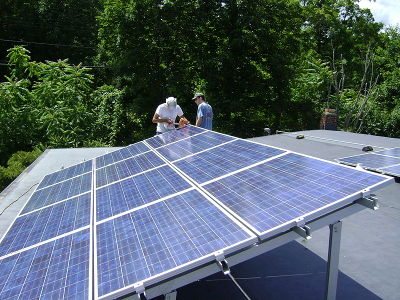Tax abatement

A tax abatement is similar to a deduction or tax credit. A tax abatement is typical used to reduce the level of property tax faced by an individual or firm for period of time. If a government wants to stimulate growth or industry in a certain area, the government could offer a property tax abatement in the area to encourage people and firms to move there to save money (see fiscal incentive).[2]
Assume a firm that produces solar panel systems is looking to build a new factory, the firm will take into account the level of taxation that the factory will face in a particular area. If a government offers a 10 year tax abatement in their area, this encourages a solar power firm to choose that area because they will make more money from not having to pay the full level of tax.[3] There are other considerations that firms take into account but assuming all of the prospective jurisdictions offer relatively the same level of service, the property tax rate will be a factor in the decision.[4]
While tax abatements can stimulate growth to an area there is a danger that it can overstimulate other markets in the area which can negate the effects of an abatement. If firms and individuals begin to flock to an area to take advantage of the abatement, the demand for property increases, and in the short-run, the supply of property is limited. If a large influx of firms and individuals flowing into an area the price of property will rise, eventually every new property acquisition will face a higher price regardless of the abatement. Furthermore this can increase the demand for services in the area, adding to the costs for a firm.[4]
If the price of properties rise to a level equal to or above the level of the abatement, the move would not be worth the money saved by the abatement.
Renewable Energy Tax Abatement
To encourage the use of energy form renewable sources, governments can offer a tax abatement to the owner of the property that uses this energy. The state of Nevada is one such place that does this, under their program, businesses can get a property tax rebate for the generation of renewable energy. The Nevada rebate is for up to 55% of property tax and for a period of 20 years and includes various methods of generation (with at least 10 MW capacity):[5]
See Also
References
- ↑ Wikimedia Commons.By Lucas Braun - Own work, CC BY-SA 3.0, https://commons.wikimedia.org/w/index.php?curid=12261041 [Online], Available: https://commons.wikimedia.org/wiki/File:Rooftop_Photovoltaic_Array.jpg#/media/File:Rooftop_Photovoltaic_Array.jpg [Aug 17, 2017]
- ↑ Investopedia. "Abatement." [Online], Available: http://www.investopedia.com/terms/a/abatement.asp?ad=dirN&qo=investopediaSiteSearch&qsrc=0&o=40186 [Aug 21, 2016].
- ↑ N.Y. Augustine et al. Erosion of the Property Tax Base: Trends, Causes and Consequences. Cambridge: Lincoln Institute of Land Policy, 2009, pp. 226.
- ↑ 4.0 4.1 R.W. Wassmer. The Increasing Use of Property Tax Abatement as a Means of Promoting Sub-National Economic Activity in the United States. Sacramento: California State University, 2007, pp. 5-6.
- ↑ Nevada Governor's Office of Energy. "Renewable Energy Tax Abatements." [Online], Available: http://energy.nv.gov/Programs/Renewable_Energy_Tax_Abatements/ [Aug 22, 2016].

